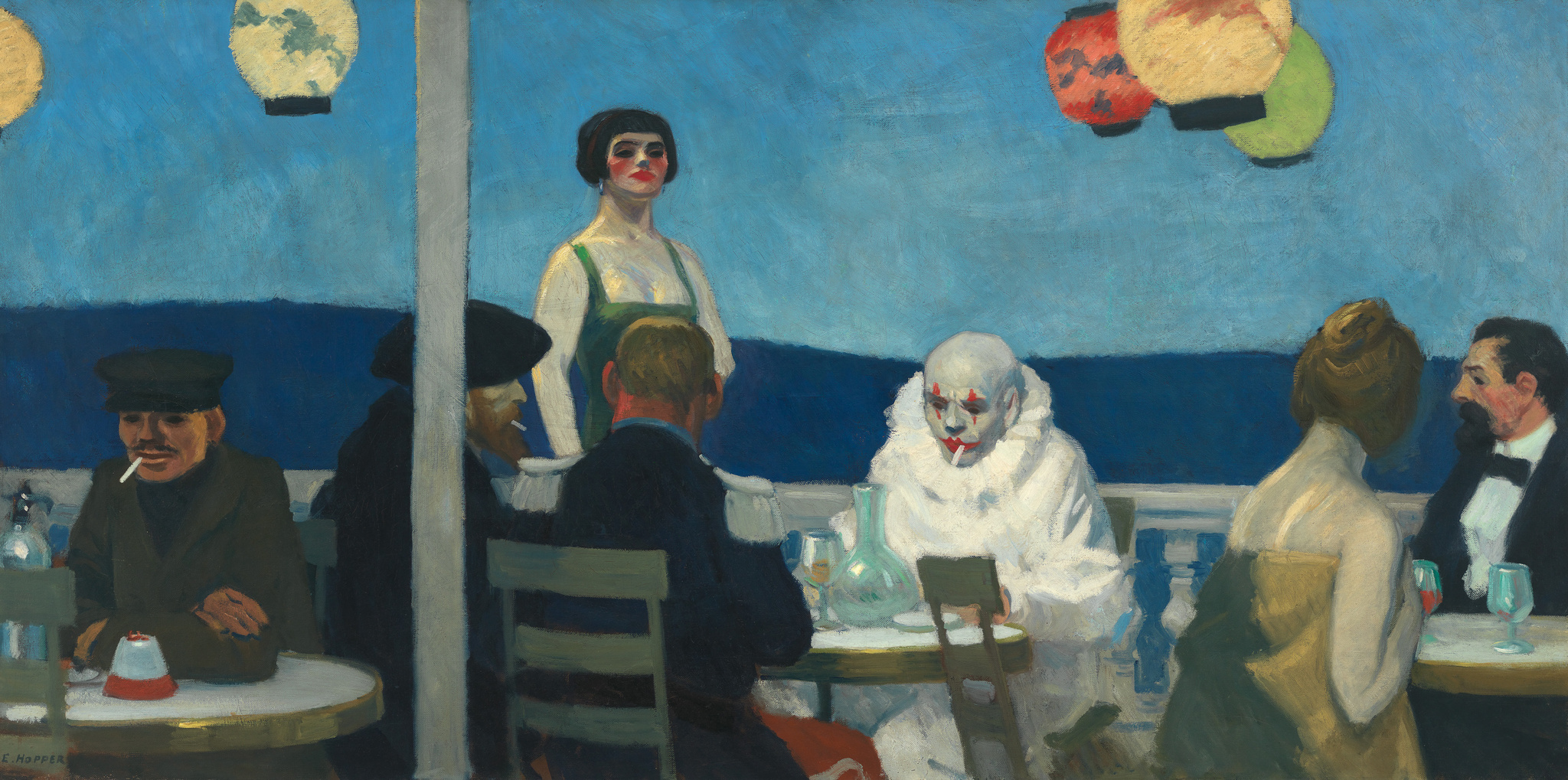Not on view
Date
1914
Classification
Paintings
Medium
Oil on canvas
Dimensions
Overall: 36 1/8 × 71 15/16in. (91.8 × 182.7 cm) Frame: 42 7/16 × 78 1/4 × 3in. (107.8 × 198.8 × 7.6 cm)
Accession number
70.1208
Credit line
Whitney Museum of American Art, New York; Josephine N. Hopper Bequest
Rights and reproductions
© Heirs of Josephine N. Hopper/Licensed by Artists Rights Society (ARS), New York
Audio
-
0:00
Edward Hopper, Soir Bleu, 1914
0:00
Narrador: El Dr. Rick Brettell es profesor de Estudios Estéticos en la Universidad de Texas, y ha escrito numerosos trabajos sobre Hopper en París. Él considera que Soir Bleu es la pintura más ambiciosa de la carrera de Edward Hopper.
Rick Brettell: Soir Bleu es una pintura peculiar para Hopper, ya que todas sus pinturas al óleo de una escala importante, hasta Soir Bleu, eran por lo general paisajes naturales o urbanos de espacio positivo, y no tenían figuras humanas o solo tenían algunas pequeñas. Soir Bleu es una pintura de figuras. Y es una pintura de figuras que muestra que Hopper había querido en realidad competir con los grandes lienzos de Matisse y Picasso. Incluso lo vemos en el título, Soir Bleu, que fue al ser exhibido por primera vez en 1915, y sigue siendo hoy, un título en francés. Él quiere que pienses en francés, y que pienses en Francia. No se llama Blue Evening, ni Tarde azul. Se llama Soir Bleu.
Narrador: Hopper retrata una extraña diversidad de personas reunidas bajo una carpa al final de una fiesta. Entre ellas vemos: en el extremo izquierdo, un hombre de clase trabajadora fumando un cigarrillo; en el centro, una trabajadora sexual y un payaso; y en el extremo derecho, una pareja burguesa o de clase media alta.
Rick Brettell: Nadie es semejante a los otros. Todos están separados de los demás. Hopper traduce esto en una especie de escenario del hombre común, en el que la mayoría de los integrantes forma parte de un mundo de entretenimiento urbano alienado, en el que uno está siempre buscando un sentido en algún otro lugar: en un disfraz, en una trabajadora sexual, en un trago, en un cigarrillo o en una fiesta. Y por supuesto, ese tipo de mundo es el mundo que Hopper representa con tanta relevancia cuando regresa a Nueva York en 1910 y permanece allí hasta el final de su vida.
-
Edward Hopper, Soir Bleu, 1914
In The Whitney's Collection: Selections from 1900 to 1965, Hopper Drawing and Modern Life: Edward Hopper and His Time
0:00
Edward Hopper, Soir Bleu, 1914
0:00
Narrator: Dr. Rick Brettell is a professor of Aesthetic Studies at the University of Texas, and has written extensively about Hopper in Paris. He considers Soir Bleu the single most ambitious painting of Edward Hopper’s career.
Rick Brettell: Soir Bleu is an odd painting for Hopper, because Hopper’s oil paintings of any sort of decent scale, up until Soir Bleu were generally landscapes or cityscapes that were space positive and had tiny or nonexistent human figures. Soir Bleu is a figure painting. And it’s a figure painting that shows that Hopper had wanted to actually take on the big canvases of Matisse and Picasso. Even the title of Soir Bleu, which was, it is today, and when it was shown for the first time in 1915 in French. So he wants to make you think French and think of France. He doesn’t call it Blue Evening. He calls it Soir Bleu.
Narrator: Hopper depicts an odd assortment of people gathered under a tent at the end of a party. Among them: on the far left, a working-class man smoking a cigarette; in the center, a sex worker and a clown, and on the far right, a bourgeois or upper middle class couple.
Rick Brettell: No one is like anybody else. Everybody is separated from everybody else. Hopper kind of translates it into an everyman setting, in which most of the people in it, are part of a kind of world of alienated urban entertainment, in which one is always searching for a meaning somewhere else, in a costume or in a prostitute or in a drink or in a cigarette or in a party, And those sorts of worlds is the world that Hopper of course represents so importantly when he comes back to New York in 1910 and remains there until the end of his life.
Exhibitions
-

The Whitney’s Collection: Selections from 1900 to 1965
June 28, 2019–May 1, 2025
-
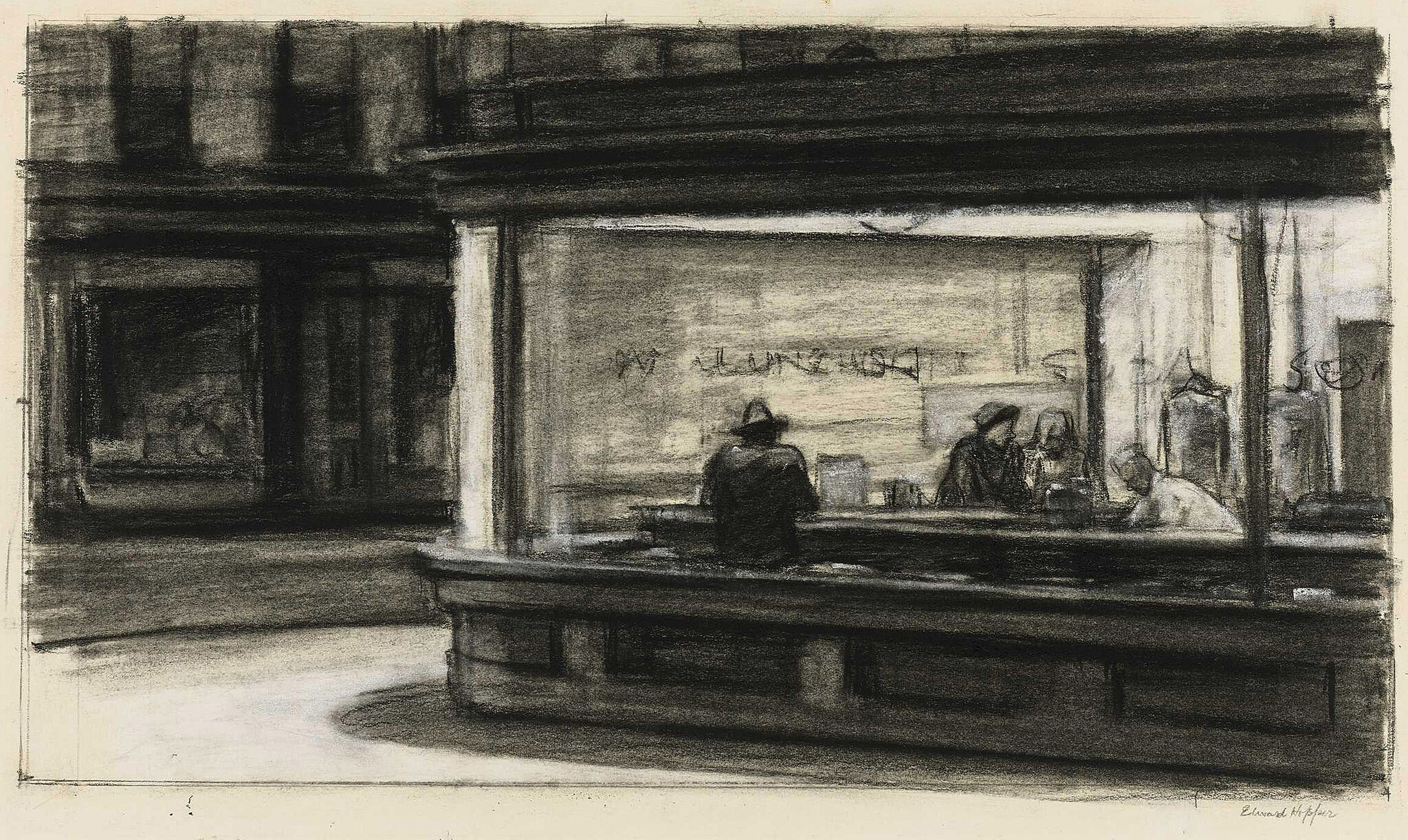
Hopper Drawing
May 23–Oct 6, 2013
-
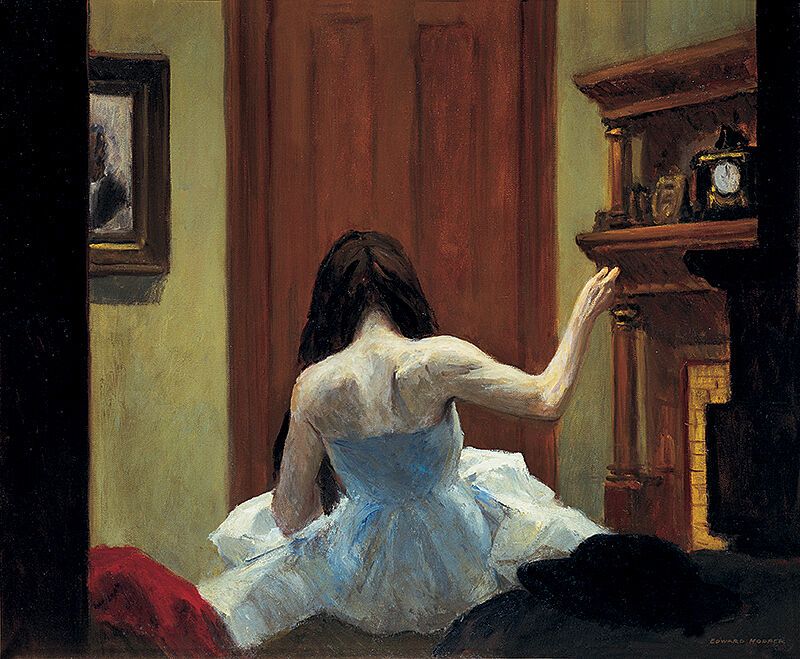
Modern Life: Edward Hopper and His Time
Oct 28, 2010–Apr 10, 2011
-

The Whitney’s Collection
Jan 30, 2008–Jan 3, 2010
-
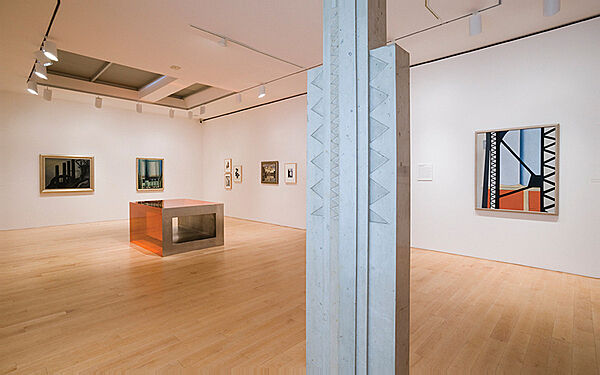
Modernisms
Aug 29, 2007–Jan 13, 2008
-

Full House: Views of the Whitney’s Collection at 75
June 29–Sept 3, 2006
-
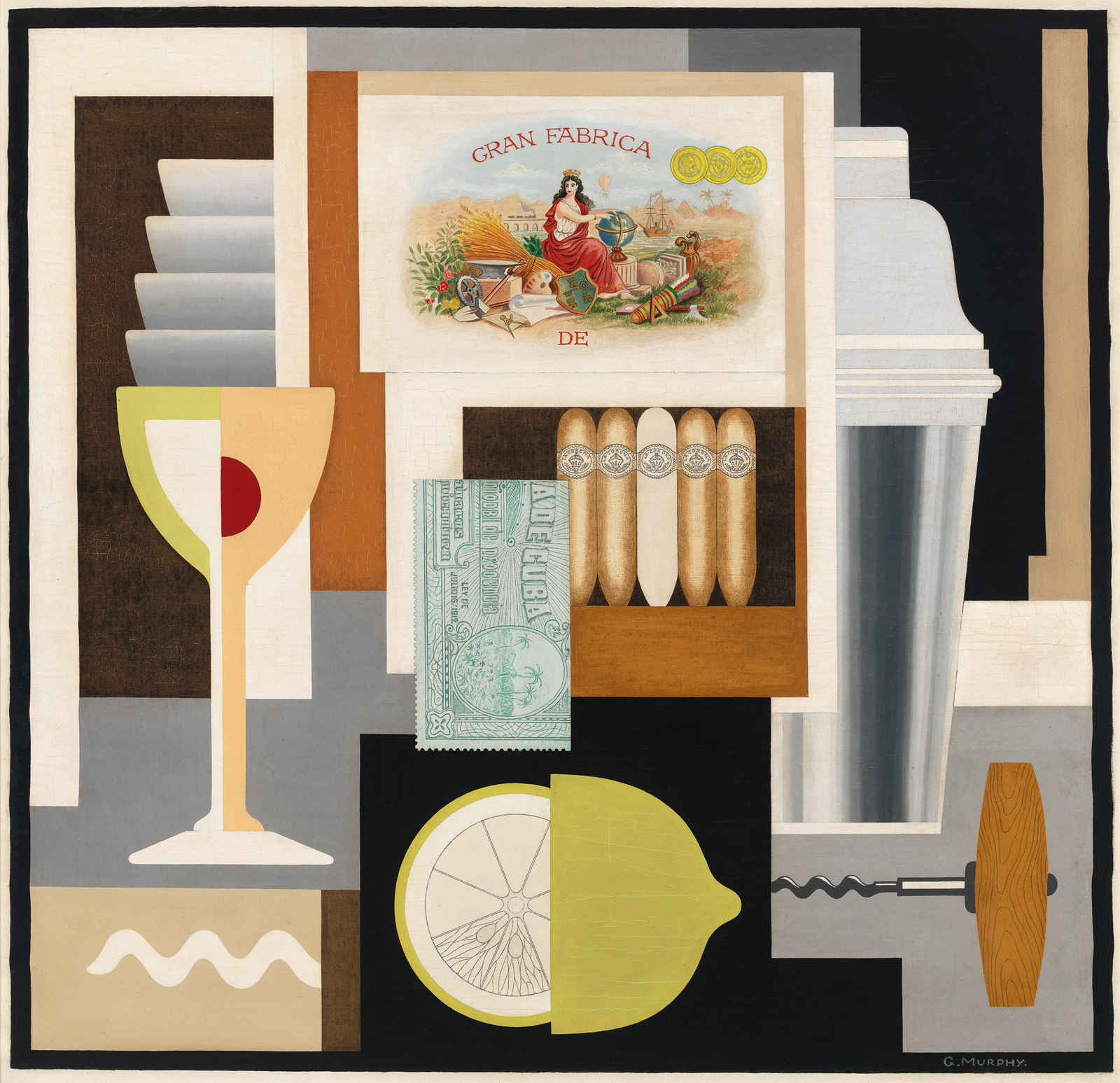
Highlights from the Permanent Collection: From Hopper to Mid-Century
Feb 25, 2000–May 20, 2006
Installation photography
-
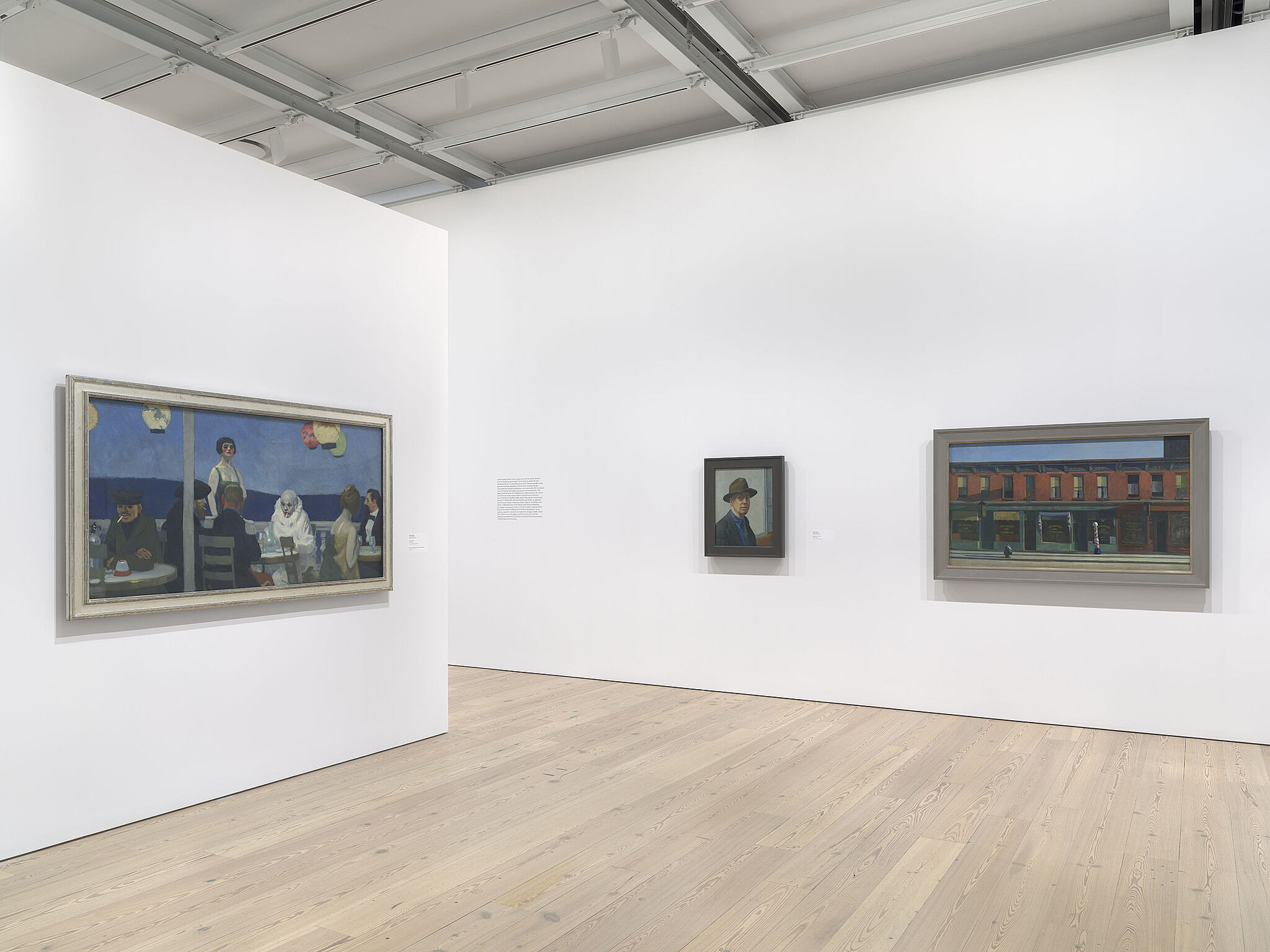

Installation view of The Whitney’s Collection: Selections from 1900 to 1965 (Whitney Museum of American Art, New York, June 28, 2019- ). From left to right: Edward Hopper, Soir Bleu, 1914; Edward Hopper, Self-Portrait, 1925-30; Edward Hopper, Early Sunday Morning, 1930. Photograph by Ron Amstutz
From the exhibition The Whitney’s Collection: Selections from 1900 to 1965
-
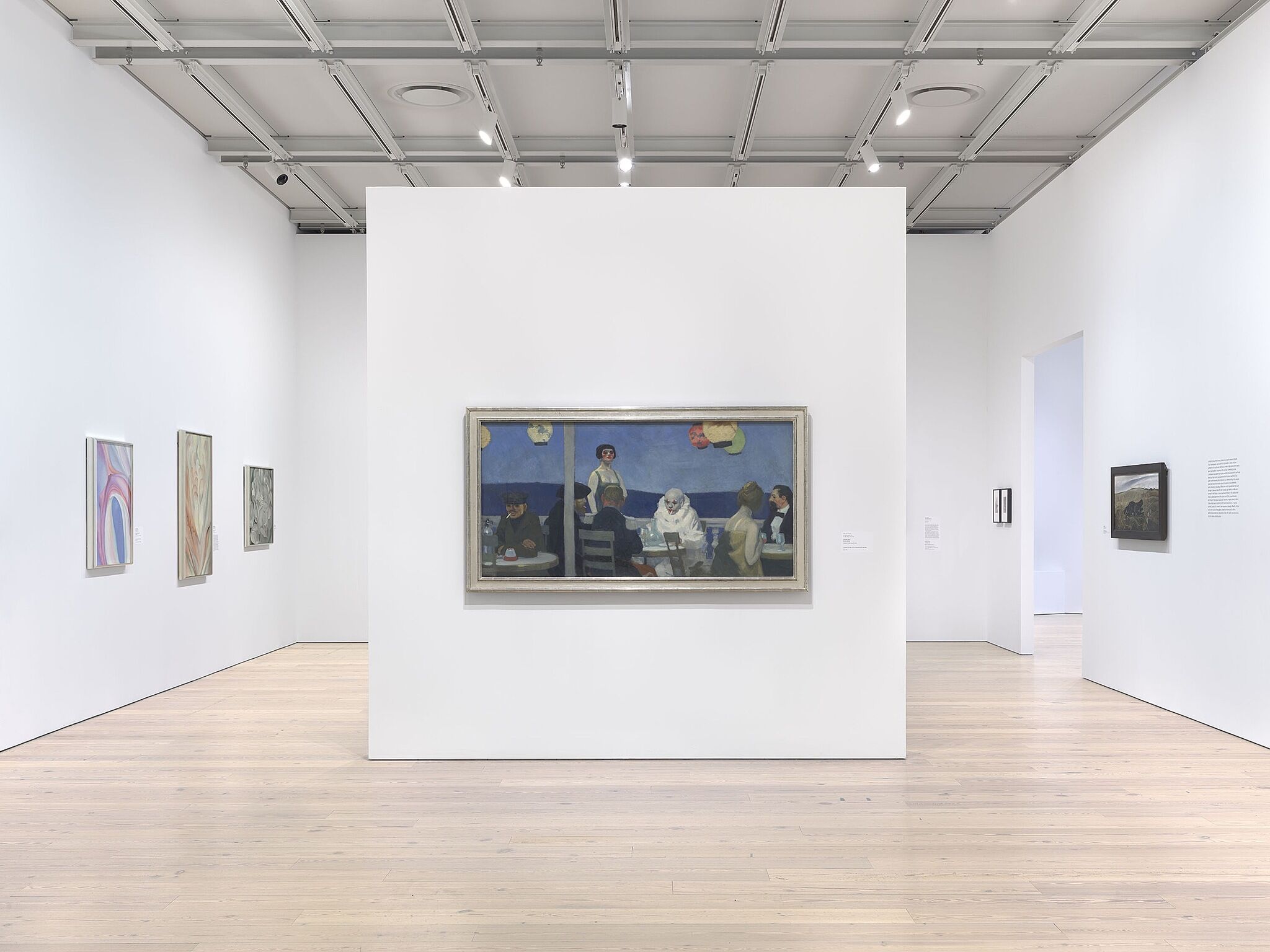

Installation view of The Whitney’s Collection: Selections from 1900 to 1965 (Whitney Museum of American Art, New York, June 28, 2019- ). From left to right: Georgia O’Keeffe, Music, Pink and Blue No. 2, 1918; Georgia O’Keeffe, Flower Abstraction, 1924; Georgia O’Keeffe, The White Calico Flower, 1931; Edward Hopper, Soir Bleu, 1914; Andrew Wyeth, Winter Field, 1942. Photograph by Ron Amstutz
From the exhibition The Whitney’s Collection: Selections from 1900 to 1965

